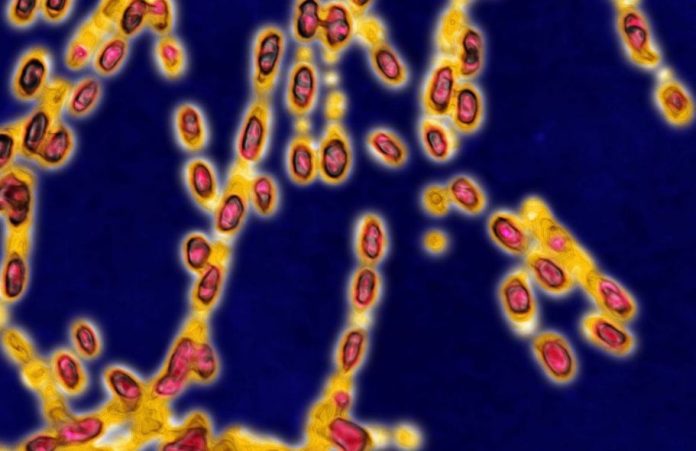Tularemia is a serious infectious disease caused by the bacterium Francisella tularensis. The disease is named after Tulare County, California. The Centers for Disease Control and Prevention (CDC) has designated the F. tularensis bacterium as a top-tier bioterrorism agent, meaning that it is considered to pose a high risk to national security and public health. Now, researchers at the California NanoSystems Institute at UCLA have developed a nanoparticle delivery system for the antibiotic moxifloxacin, which markedly improves the drug’s effectiveness against pneumonic tularemia. Their findings were published in the journal ACS Nano.
Senior author Jeffrey Zink, PhD, a distinguished professor of chemistry and biochemistry, developed the mesoporous silica nanoparticles used for drug delivery. He and his team conducted an extensive process to find the best particle for the delivery system. He explained, “The nanoparticles are full of deep empty pores. We place the particles in drug solution overnight, filling the pores with drug molecules. We then block the pore openings on the nanoparticle’s surface with molecules called nanovalves, sealing the drug inside the nanoparticle.”
When the antibiotic containing the nanoparticles are injected into an infected animal, in this case a mouse, the drug stays in the nanoparticles until they reach their target: white blood cells called macrophages. Macrophages consume nanoparticles into compartments that have an acidic environment. The nanovalves, which are designed to open in response to the more acidic surroundings, then release the drug. Dr. Zink said, “We tested several different particles and nanovalves until we found the ones that would carry the maximum amount of drug and release it at just the right pH value.”
“F. tularensis survives and multiplies within macrophages, especially those in the liver, spleen and lung,” explained the other senior author, Marcus Horwitz, MD, a distinguished professor of medicine and microbiology, immunology and molecular genetics. He added, “Macrophages readily devour mesoporous silica nanoparticles, making these particles ideal for treating these types of infections.”
Moxifloxacin is a potent treatment for tularemia; however, it has side effects when administered as a free drug in the bloodstream. The researchers strove to maximize the effectiveness of the treatment while reducing side effects. “When you give a drug freely in the blood, only 1 or 2 percent of it gets to where you want it to go,” explained Dr. Horwitz. He added, “With this system, the drug is contained inside the nanoparticles until they are inside macrophages, delivering a much larger amount of the drug directly to the site of infection.” He added that freely flowing drugs are metabolized and excreted from the moment they are administered, whereas nanoparticles protect drug molecules from metabolism and excretion until after their release in the target cells; thus, making nanotherapeutics potentially very potent.
The study compared the effectiveness of freely injected moxifloxacin with that delivered by the controlled-release nanoparticles. In mice given a highly lethal dose of Francisella tularensis, the nanoparticle-delivered moxifloxacin caused few side effects and was more effective at reducing the number of bacteria in the lungs than a dose of freely injected moxifloxacin two to four times greater. The authors note that the nanoparticle delivery system has the potential to maximize antibiotic effectiveness and reduce side effects in other infectious diseases such as tuberculosis, Q fever, and Legionnaires’ disease.















